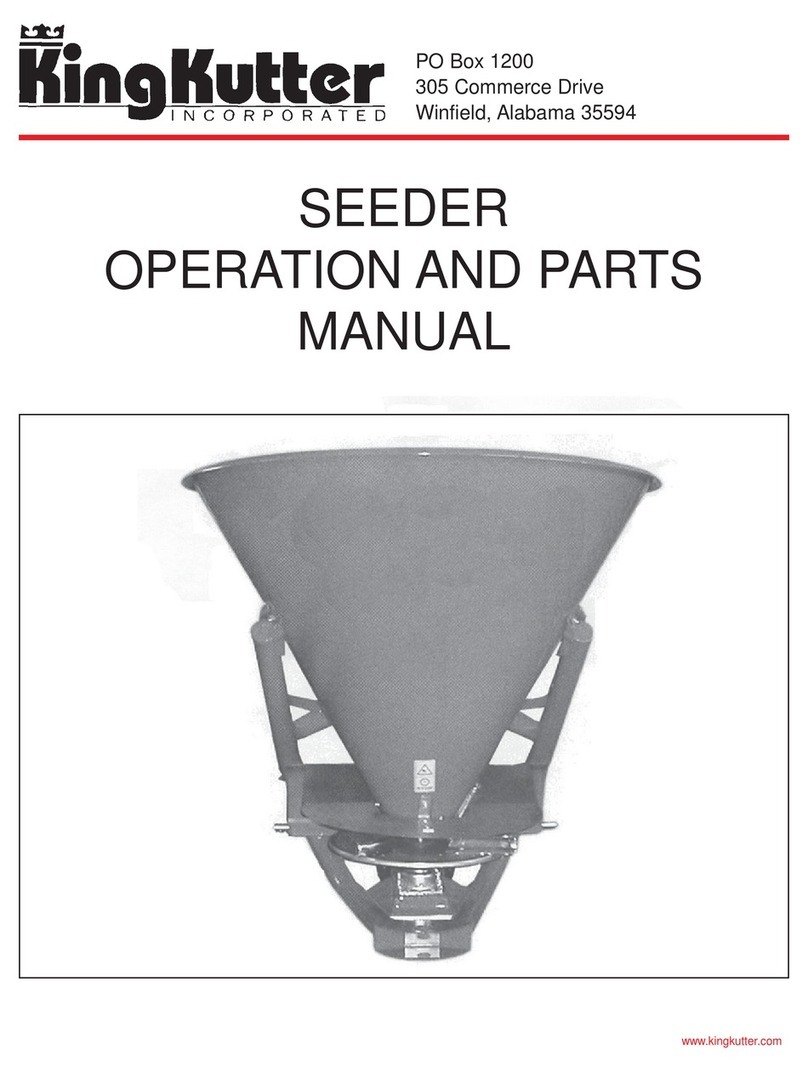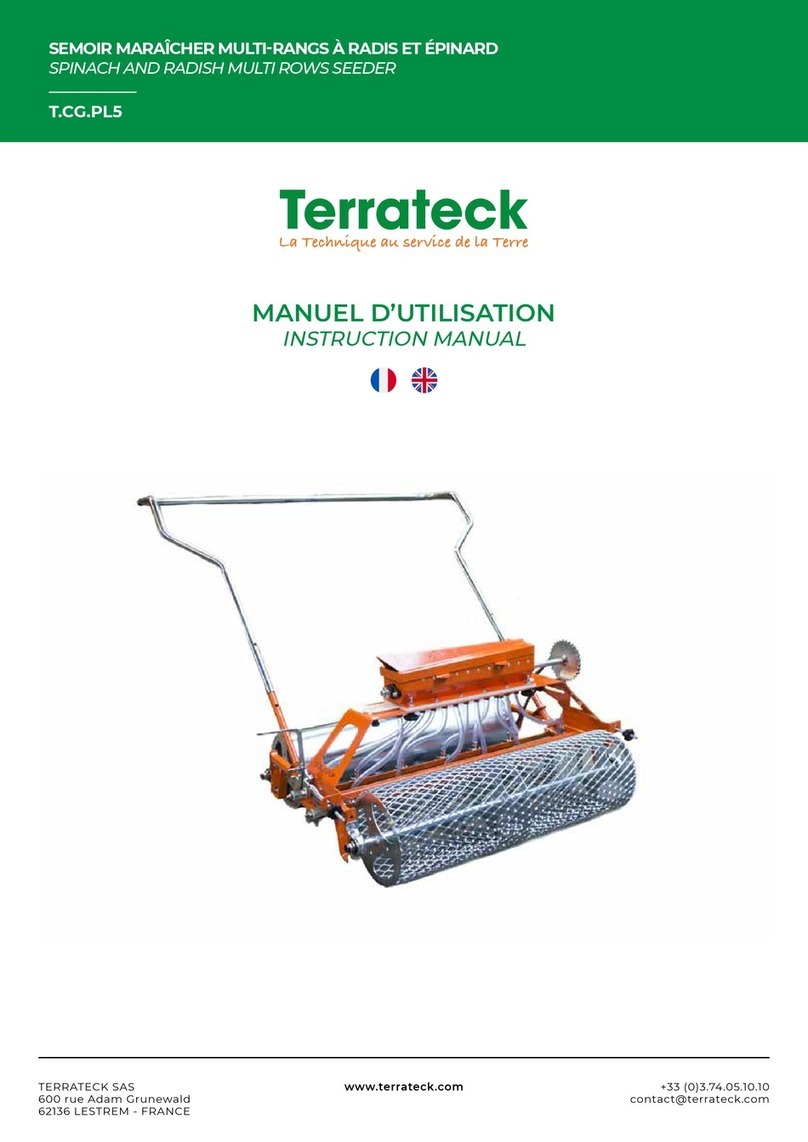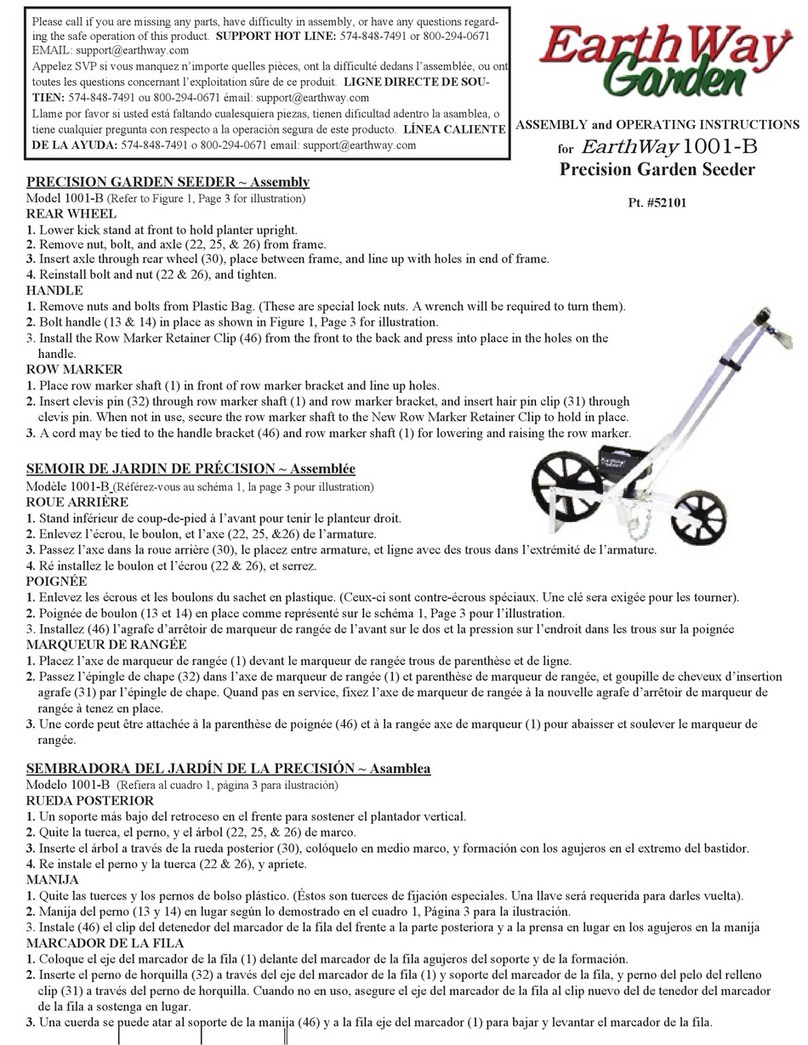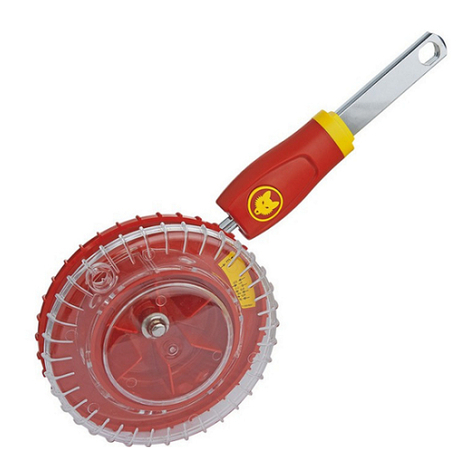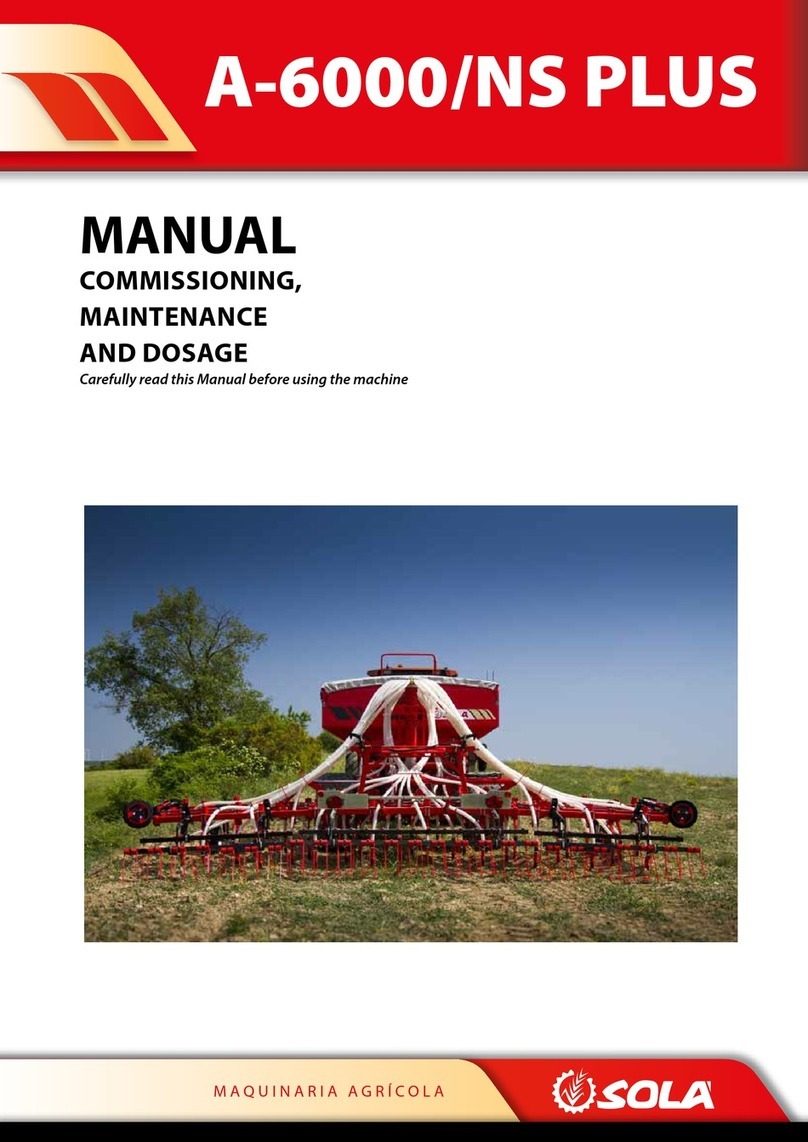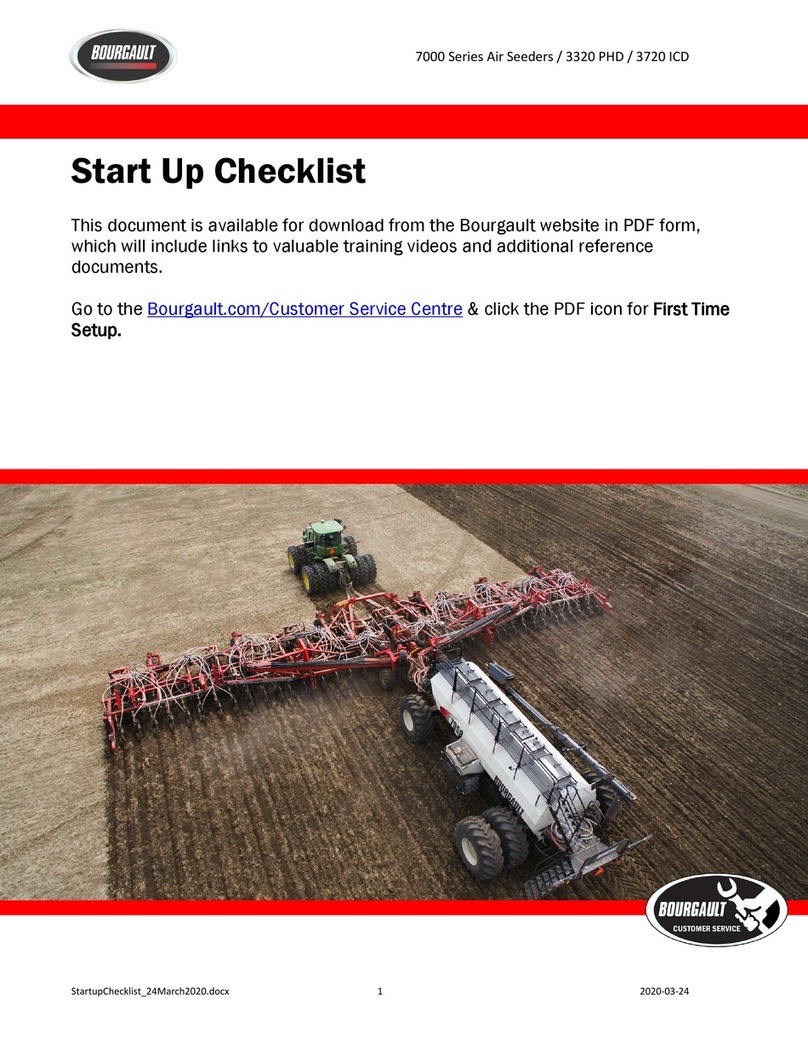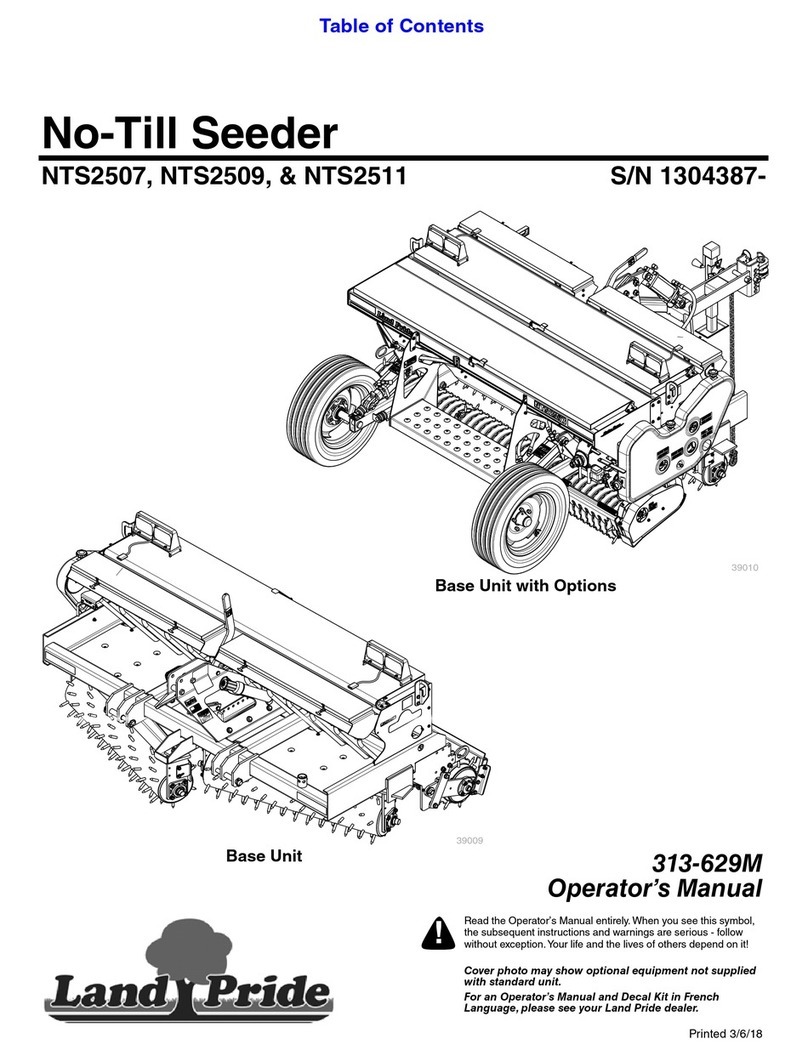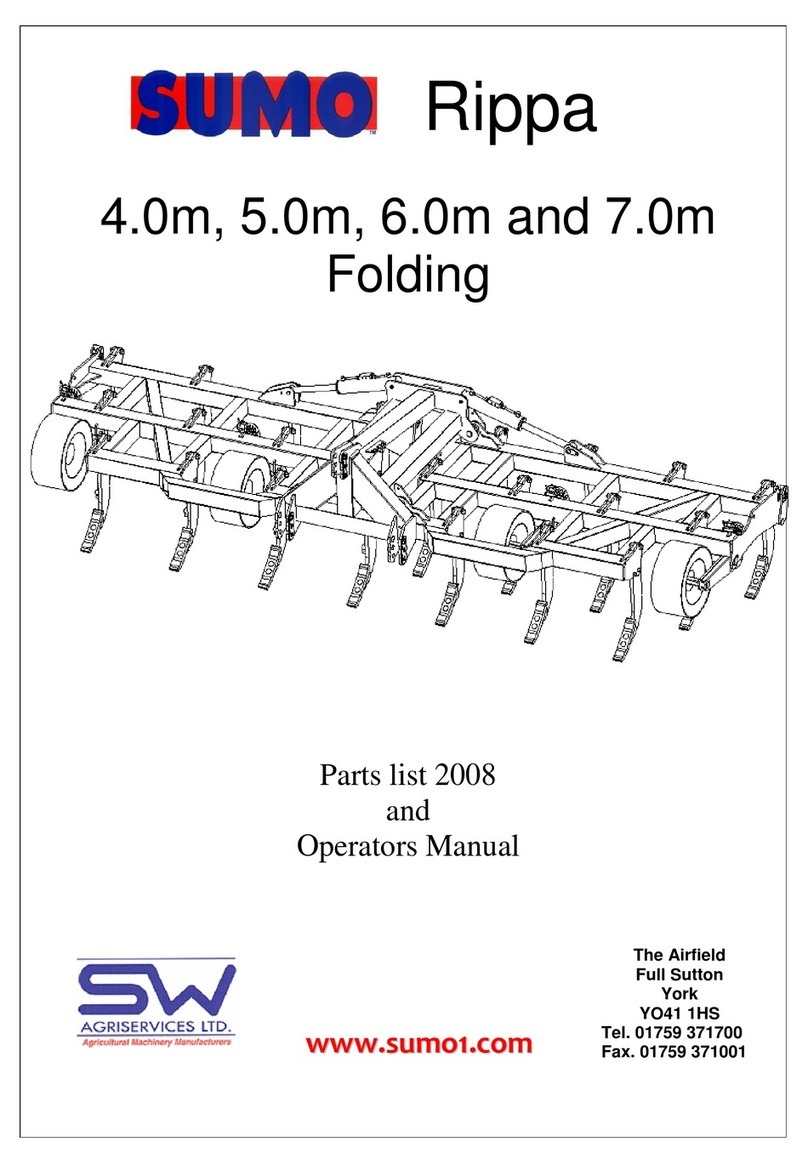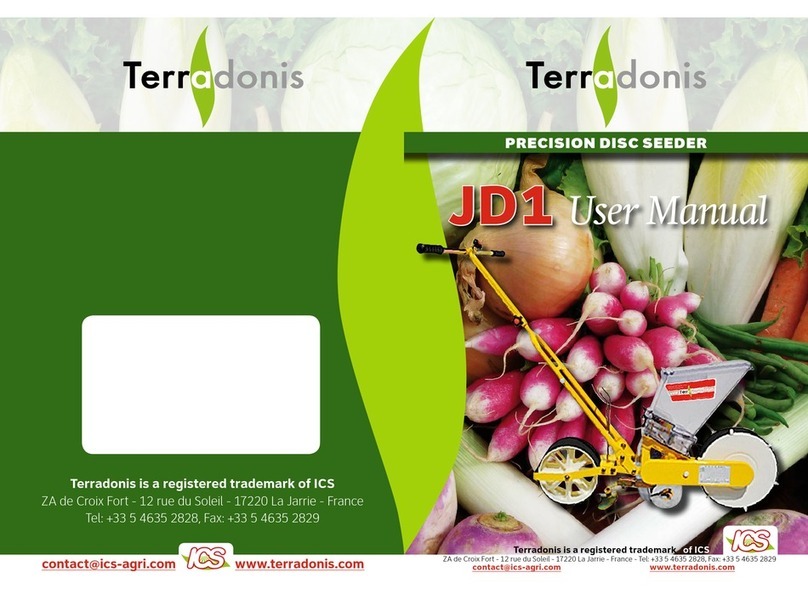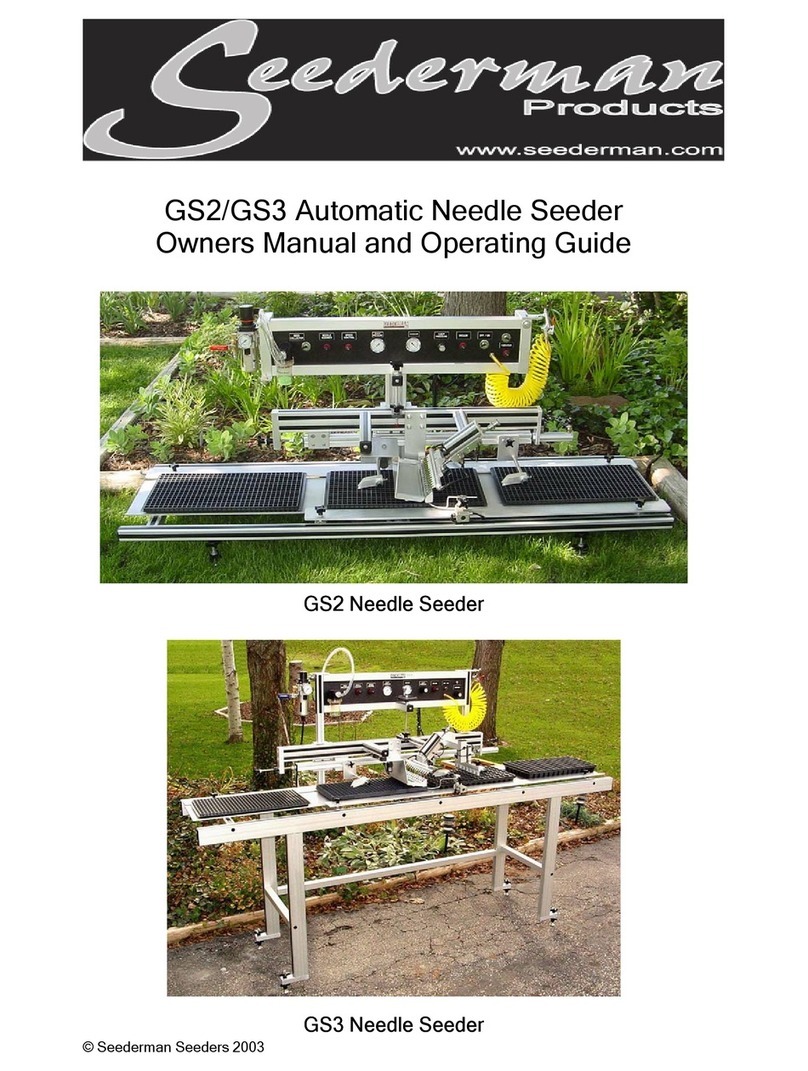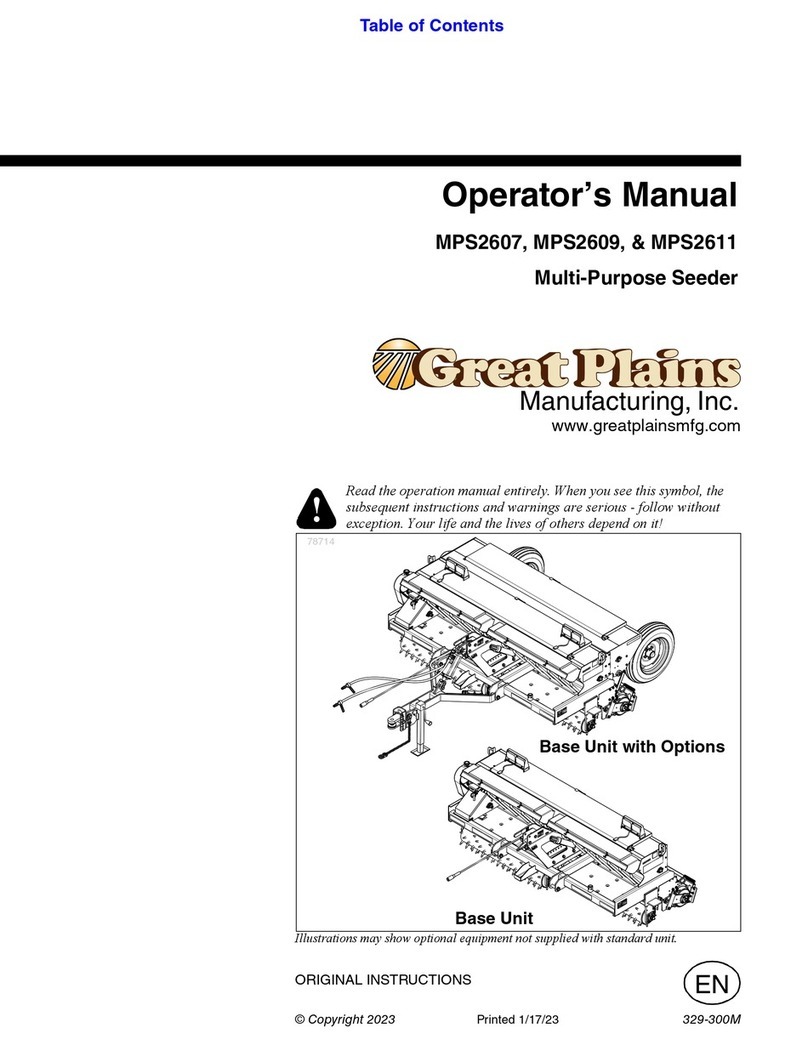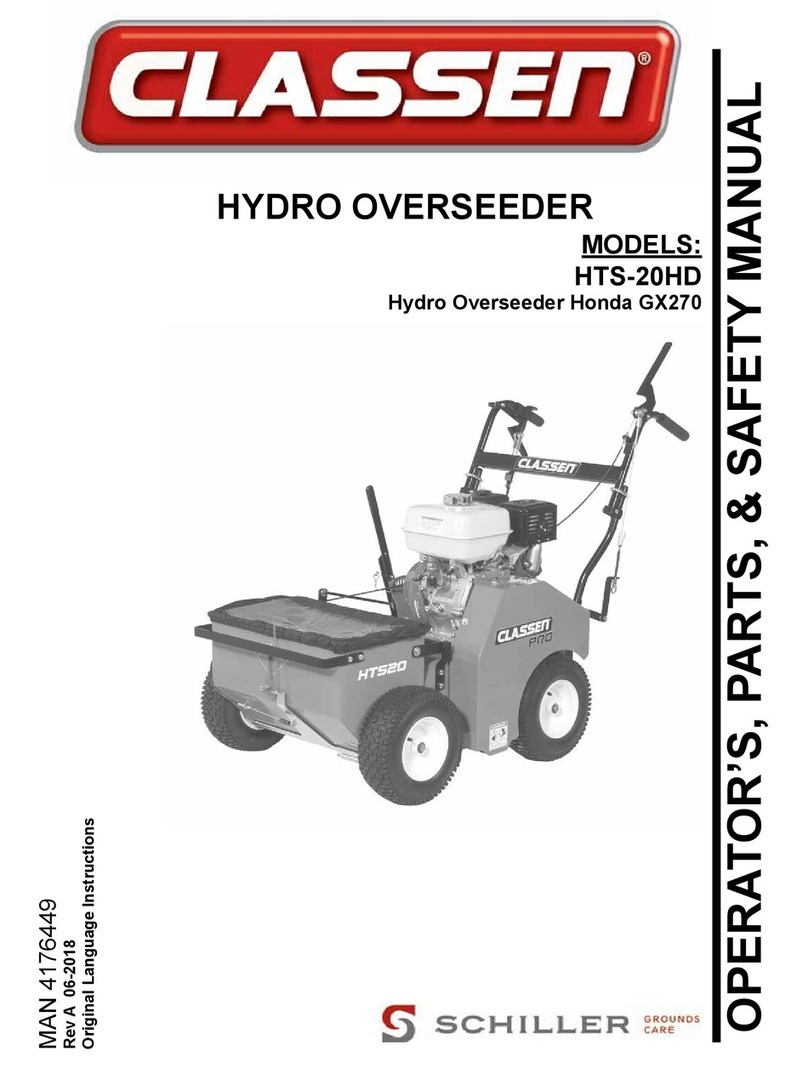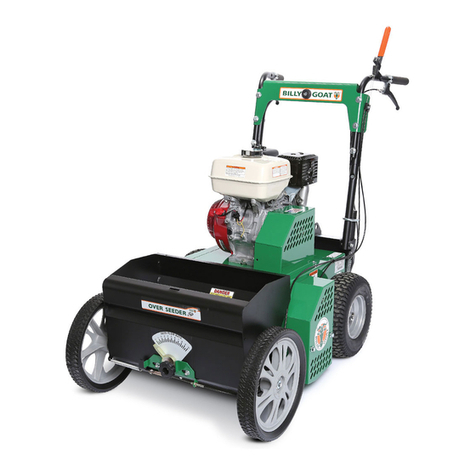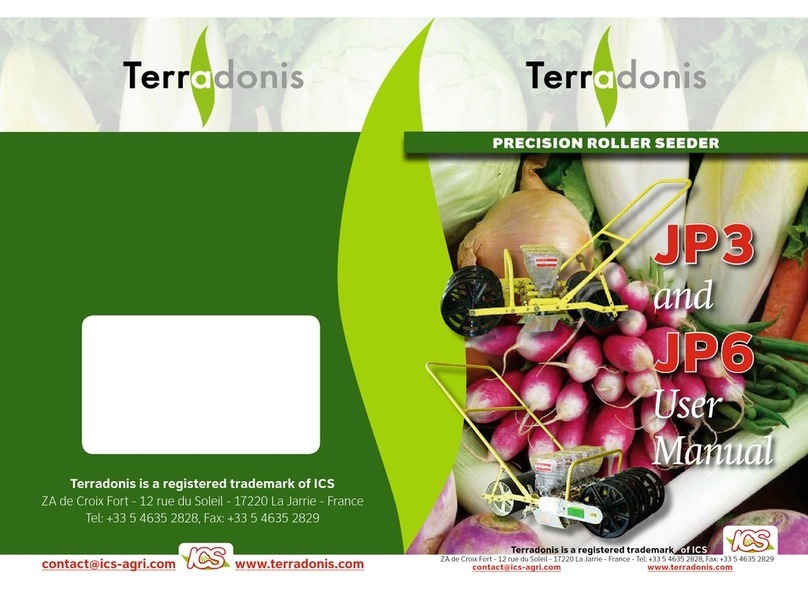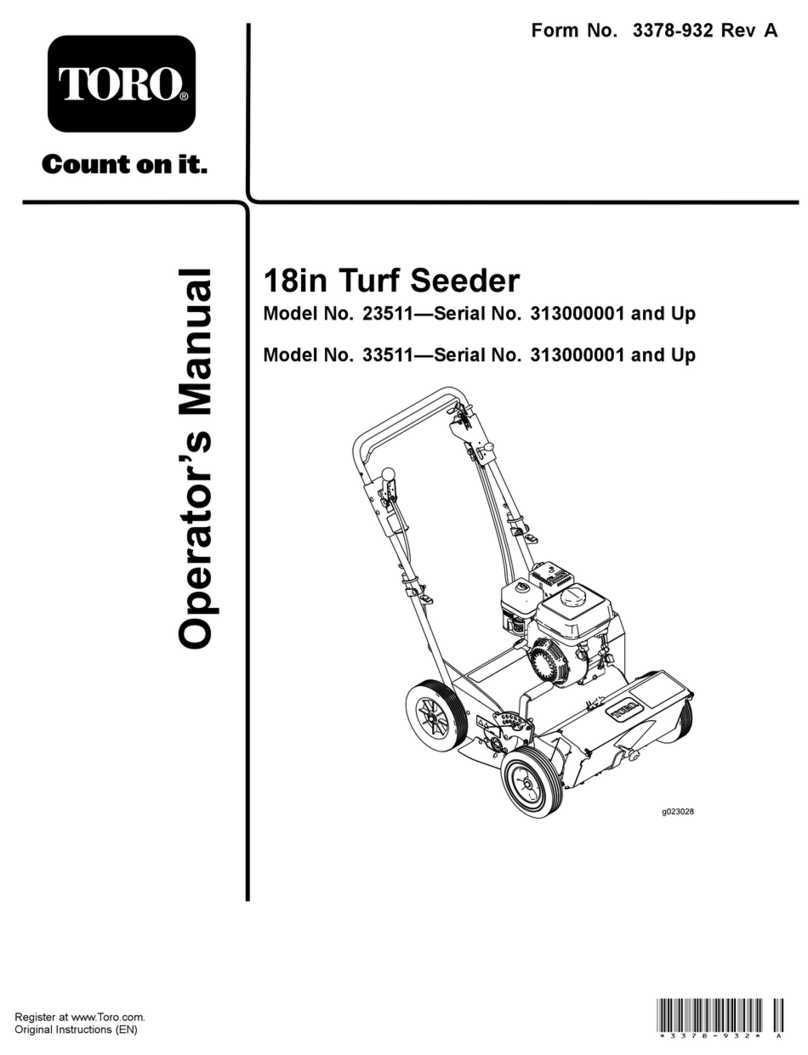
5. Always stop the tractor, set brake, shut off the tractor engine, remove the ignition
key, lower implement to the ground and allow rotating parts to come to a complete
stop before dismounting tractor. Never leave equipment unattended with the tractor
running.
6. Never place hands or feet under implement with tractor engine running or before you
are sure all motion has stopped. Stay clear of all moving parts.
7. Do not reach or place yourself under equipment until it is blocked securely.
8. Do not allow riders on the implement or tractor at any time. There is no safe place
for riders.
9. Do not operate unless all personnel, livestock and pets are 50 feet away to prevent
injury by thrown objects.
10.Before backing up, disengage the implement and look behind carefully.
11.Install and secure all guards and shields before starting or operating.
12.Keep hands, feet, hair and clothing away from moving parts.
13.Never operate tractor and implement under trees with low hanging limbs. Operators
can be knocked off the tractor and then run over by the implement.
14.Stop implement immediately upon striking an obstruction. Turn engine off, remove
key, inspect and repair any damage before resuming operation.
15.Stay alert for holes, rocks and roots in the terrain and other hidden hazards. Keep
away from drop-offs.
16.Use extreme care and maintain minimum ground speed when transporting on
hillside, over rough ground and when operating close to ditches or fences. Be careful
when turning sharp corners.
17.Reduce speed on slopes and sharp turns to minimize tipping or loss of control. Be
careful when changing directions on slopes. Do not start or stop suddenly on slopes.
Avoid operation on steep slopes.
18.When using a unit, a minimum 20% of tractor and equipment weight must be on
tractor front wheels. Without this weight, tractor could tip over, causing personal
injury or death. The weight may be attained with a front end loader, front wheel
weights, ballast in tires or front tractor weights. When attaining a minimum 20% of
tractor and equipment weight on the front wheels, you must not exceed the ROPS
weight certification. Weigh the tractor and equipment. Do not guess or estimate!
19.Inspect the entire machine periodically1. Look for loose fasteners, worn or broken
parts, and leaky or loose fittings.
20.Pass diagonally through sharp dips and avoid sharp drops to prevent “hanging up”
tractor and implement.
21.Avoid sudden starts and stops while traveling up or downhill.
22.Always use down slopes; never across the face. Avoid operation on steep slopes.
Slow down on sharp turns and slopes to prevent tipping and/or loss of control.
OPERATION 10 ABI ATTACHMENTS
COMMAND SEEDER OPERATOR’SMANUAL
1See Chapter 4 - Maintenance.
